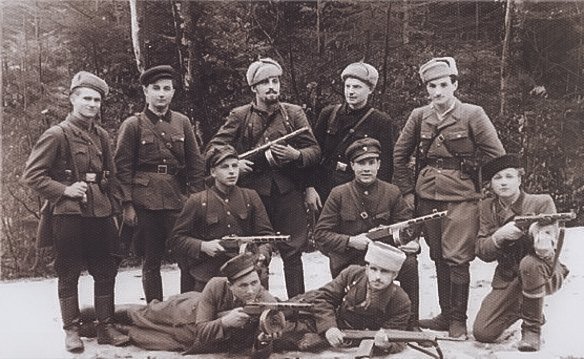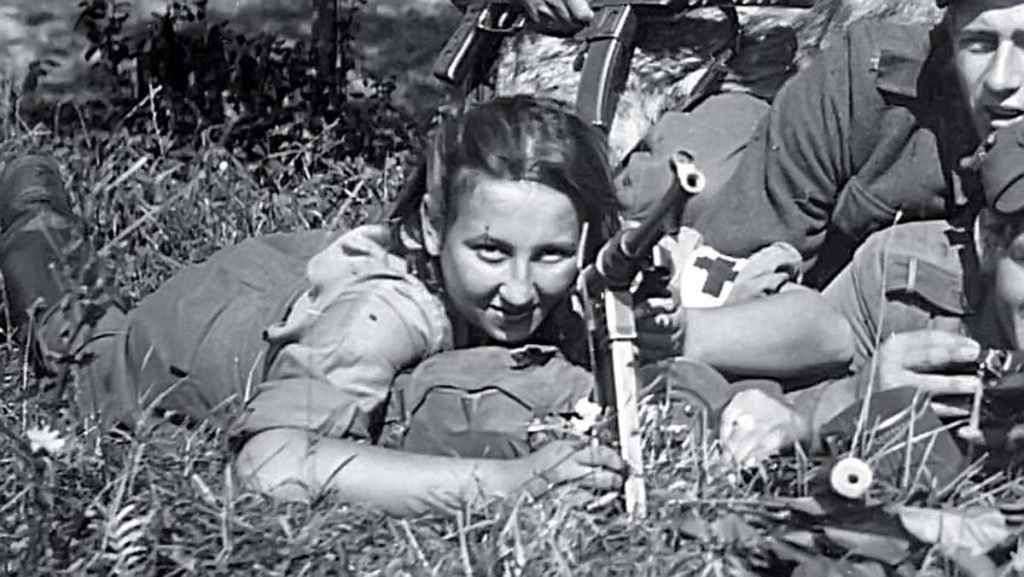
The Polish “Cursed Soldiers” were a paramilitary group that fought Russian occupation after World War II. Photo courtesy of The Krakow Post.
The popular aphorism “one man’s terrorists are another man’s freedom fighters” is about perspective. Some of the best-known freedom fighters to face off against a Soviet or Russian invasion were the Afghan mujahedeen. After fighting from 1979 to 1989 — with support from US Army Special Forces soldiers and CIA Stinger missiles — the Afghan mujahedeen defeated their invaders.
But while the Afghan freedom fighters are well known, many others are largely forgotten. We’ve put together a list of resistance movements and freedom fighters — from the Ukrainian Insurgent Army to the “Cursed Soldiers” in Poland and the “Forest Brothers” from the Baltic States — that each faced Russian invasions.
The Ukrainian Insurgent Army

The Ukrayinska Povstanska Armiya (UPA), otherwise known as the Ukrainian Insurgent Army, fought both Soviet and Nazi troops in a long campaign to keep Ukraine independent. A staunchly anti-communist group formed in the 1920s to resist Soviet occupiers, the UPA shifted in 1942 to a resistance force again Nazi occupation after the Soviet Union’s Red Army pulled out of the country to defend Russia. Nearly 1 million Ukrainian followers preached recognition of Ukraine as a free and independent nation.
The UPA had no outside support from the Allies, unlike the French Resistance, the Polish Underground State, and other popular resistance movements of the time. Still, the UPA engaged in an insurgency against the Nazis — and later, the Russians — throughout the war using small arms and limited artillery field guns. In the summer of 1944, the Soviets maneuvered 30,000 troops to Volyn to destroy a UPA uprising. The UPA defended against the assault, inflicting, according to some estimates, 2,000 Russian deaths. The battle may have been won, but a much larger offensive consisting of 20 infantry divisions supported by artillery and armor support crushed the UPA’s efforts by spring of 1945.
The UPA killed an estimated 12,000 Germans and their allies in battle, but it came at a cost. Between 1944 and 1953, around 153,000 Ukrainians lost their lives, while nearly 204,000 Ukrainians were arrested and deported to Siberia and northern Russia.
The UPA also clashed with Poland, and between spring of 1943 and autumn of 1944, Ukrainian troops slaughtered 100,000 Poles in a heinous ethnic cleansing campaign. The UPA fought against Soviet rule until the mid-1950s.
Poland’s ‘Cursed Soldiers’

For decades after World War II, the Soviet Union attempted to erase the history of Polish anti-communist freedom fighters. When Poland regained its sovereignty in 1989, the nation finally recognized the war these fighters covertly prosecuted. They called them by the same name that Russians had labeled them in propaganda: “Cursed Soldiers” (also called “Doomed Soldiers”).
“The Cursed Soldiers did not lay down arms, because they did not want to live in a country where there was no real freedom, sovereignty or independence, and which was in fact ruled by the enemy,” Poland’s President Andrzej Duda said at a National Cursed Soldiers Remembrance Day ceremony in 2020. They were “those who never surrendered,” he added.
The soldiers and their support network within the postwar underground hid under assumed names as a means of survival. They feared reprisals, prison, torture, and death, and the Soviets regarded them as enemies of the communist system. Their operational activities included propaganda and armed resistance. A circulated newspaper, Orzeł Biały, offered the Polish people the ground truth, fighting the disinformation the Soviets had weaponized. The Cursed Soldiers also carried out armed conflict by overrunning prison camps, breaking into security sites, attacking militia posts, and killing double agents.
Latvian, Lithuanian, and Estonian ‘Forest Brothers’
At the end of WWII, the Soviet Army pushed occupying Nazi forces out of the Baltic States of Latvia, Lithuania, and Estonia toward Berlin. Although these nations had gained independence in 1918, the Soviets had no intention of honoring their sovereignty after the war. Soldiers who had fought on both sides feared for their lives behind the Iron Curtain. Thus, an estimated 50,000 men and women took up arms and disappeared into the forests.
These people were affectionately known as the “Forest Brothers” — a term coined during the 1905 Russian Revolution when Eastern Europeans fled from the czarist regime — and had widespread support in the Baltic States.
“We were a group of around 15,000 partisans in all of Latvia, and everyone was fighting,” Arvīds Ēriks Bluzmanis, a former Latvian border guard and Latvian Forest Brother, said in a NATO production. “There were the defenders, the policemen, former soldiers, all enemies of Soviet Russia.”
In 1949, anti-Soviet partisans worked closely with covert operatives from Western intelligence agencies. Agents shuttled into the Baltic states aboard small boats. However, by 1953, the clandestine intelligence network was discovered and ended when the Soviets either killed the agents or flipped them to become double agents.
“All our history derives from the Forest Brothers,” a Lithuanian commando told NATO in 2017. All three special forces units from Lithuania, Latvia, and Estonia share the lineage. “Their tactics of spreading out to the forest in small groups, then getting back together to fight a large enemy and fight always behind enemy territory, this is what we are prepared for, this is what we train for every day.”

Matt Fratus is a history staff writer for Coffee or Die. He prides himself on uncovering the most fascinating tales of history by sharing them through any means of engaging storytelling. He writes for his micro-blog @LateNightHistory on Instagram, where he shares the story behind the image. He is also the host of the Late Night History podcast. When not writing about history, Matt enjoys volunteering for One More Wave and rooting for Boston sports teams.
BRCC and Bad Moon Print Press team up for an exclusive, limited-edition T-shirt design!
BRCC partners with Team Room Design for an exclusive T-shirt release!
Thirty Seconds Out has partnered with BRCC for an exclusive shirt design invoking the God of Winter.
Lucas O'Hara of Grizzly Forge has teamed up with BRCC for a badass, exclusive Shirt Club T-shirt design featuring his most popular knife and tiomahawk.
Coffee or Die sits down with one of the graphic designers behind Black Rifle Coffee's signature look and vibe.
Biden will award the Medal of Honor to a Vietnam War Army helicopter pilot who risked his life to save a reconnaissance team from almost certain death.
Ever wonder how much Jack Mandaville would f*ck sh*t up if he went back in time? The American Revolution didn't even see him coming.
A nearly 200-year-old West Point time capsule that at first appeared to yield little more than dust contains hidden treasure, the US Military Academy said.












